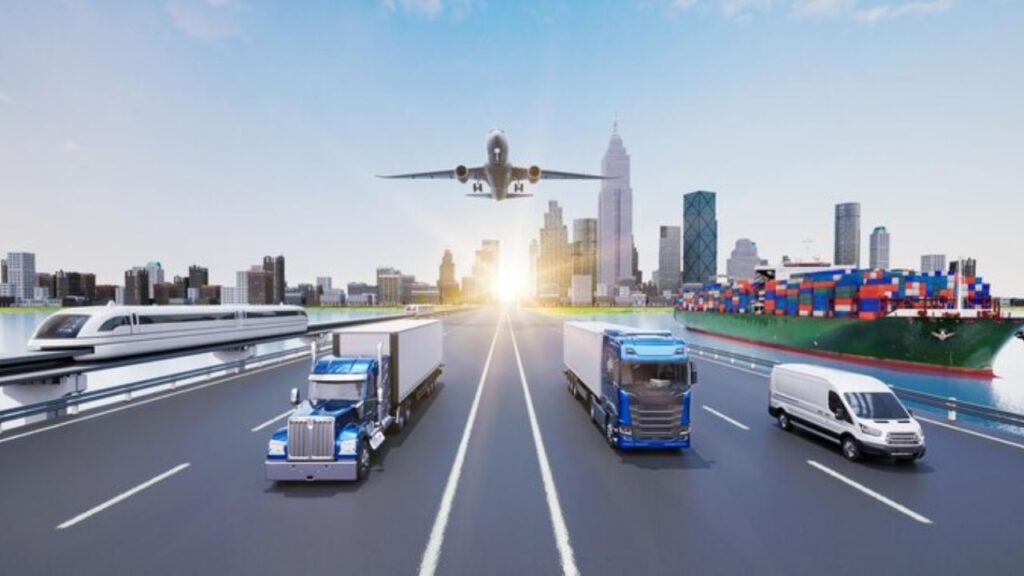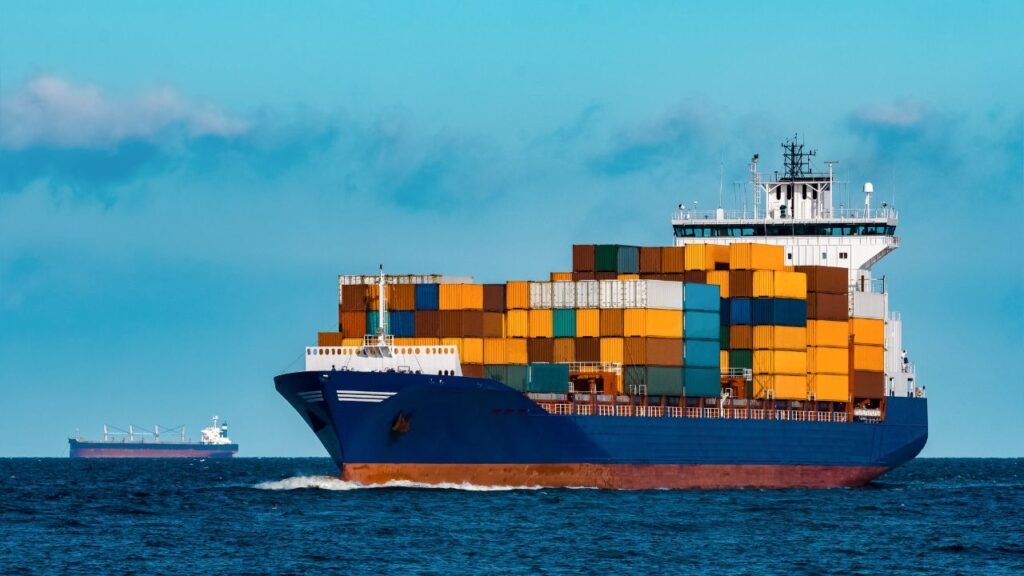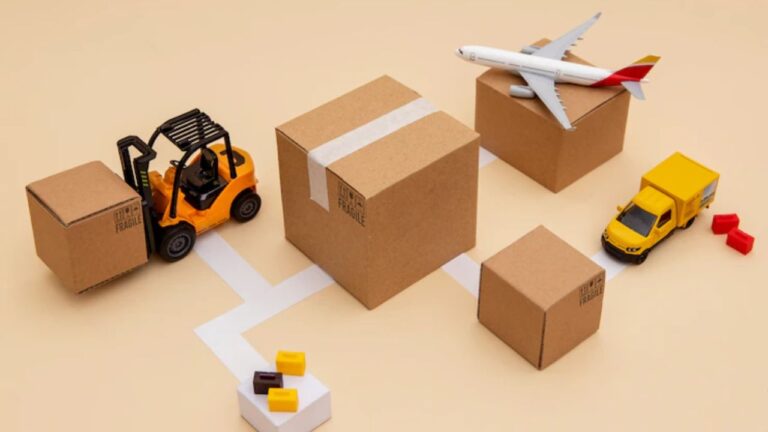Reliable documents are vital for the movement of consignment from one global destination to another—whether it’s an export-import. The documents raised in an international shipment create a long chain of actions and are necessary to guarantee a stress-free and smooth movement of consignments.
Some documents valuable to shipping will be connected with insurance, while others might have financial information. A few of them might be related to official exchange.
The most substantial document in ocean freight is the Bill of Lading, which calculates the information of the shipped cargo. However, it is essential to determine whether it’s a House Bill of Landing (HBL) or Master Bill of Lading (MBL).
Click here about the difference between forwarder-cargo-receipt and bill of lading.
This article will focus on and explains the main difference between the House Bill of Lading and the Master Bill of Lading. Without further ado, let’s get started.
What is the House Bill of Lading?

To make it short, it is one of the most crucial documents in the entire shipping process. A Bill of Lading is necessary to ship any item, and the lading serves as a contract and receipt. A completed Bill of Lading legally proves that a carrier has received the freight as mentioned and is required to send that freight in good condition to the consignee.
The details in the Bill of Lading are essential, as it leads the actions of personnel all along the shipment’s route—where it is going, how it is billed, the piece count, and how it is to be handled on the trailers and dock. It could also be on a collect or prepaid basis.
You see, arranging the transportation of a shipment can become highly complicated between all terminology, parties involved, regulations, and documentation, among other things. Thus, a shipper will frequently utilize an NVOCC or freight forwarder to organize the transport of their cargo.
To know more about NVOCC and Freight Forwarder, welcome to read another article about: What’s the difference between NVOCC and Freight Forwarder?
On top of that, the NVOCC will then book the shipment of their customers with a carrier. Once the cargo is complete into the vessel and equipped to be shipped internationally, the House Bill of Lading is distributed by the NVOCC, or freight is forwarded to the shipper who started the shipment.
On an HBL, the actual consignee of the shipment and the shipper are often listed.
Are you using a freight forwarder? Perhaps you are booking straight with the mainline carrier instead of an NVOCC. Whatever the case, you will receive a Master Bill of Lading.
What is the Master Bill of Lading

A Master Bill of Lading is categorized as a bill of lading issued by an NVOCC operator or ship owner, often referred to as a carrier. This kind of Bill of Lading is ideal for the financier as it signifies the contract between the transporter and carrier.
Global maritime transport is performed mainly as container transport. Big-scale carriers carrying container shipping worldwide, like Evergreen, Cosco, CMA CGM, Hapag-Lloyd, Maersk, MSC, etc. Those shipping companies perform their shipping activities with their container ships.
When an exporter wants to transport with one of the particular carriers, the carrier confirms and communicates with the carrier company and arranges the transportation. After the loading company, the carrier also provides a signed consignment bill to the exporter after the loaded container exits the loading port.
Keep in mind that the carrier accounts for the Master Bill of Lading. That’s because it’s also signed by the carrier and printed by the carrier. Thus, a Master Bill of Lading is one of the most reliable documents in maritime transportation.
Compared to a House Bill of Lading, a Master Bill of Lading will list the non-vessel operating company NVOCC or freight forwarder as the shipping and the receiving agent as the consignee.
Remember that the MBL is the Bill of Lading issued to the NVOCC or freight forwarded by the mainline carrier sending the cargo. The only period the actual shipper will get a Master Bill of Lading is if they’re booking freight straight with the mainline carrier or are booking via a freight forwarder.
As stated, freight forwarders aren’t licensed as carriers such as NVOCCs. Therefore, when working with a freight forwarder, the cargo’s actual shipper will receive a Master Bill of Lading.
House Bill of Lading vs. Master Bill of Lading: What is the Main Difference?

Keep in mind that the House Bill of Lading is issued by a freight forwarder and normally lists the actual shipper and consignee. Meanwhile, the mainline carrier issued a Master Bill of Lading and typically lists the non-vessel operating company and receiving agents as the consignee and shipper.
In addition, the cargo’s actual shipper will only receive a Master Bill of Lading if they work straight with a mainline carrier or a freight forwarder. Suppose the shipper collaborates with an NVOCC or freight forwarder, then they will obtain a House Bill of Lading instead.
Here’s a quick evaluation table to help you better understand the main difference between a House Bill and a Master Bill of Lading:
| House Bill of Lading | Master Bill of Lading | |
| Issued by | Freight forwarders | Shipping lines or carriers |
| Issued on | On the pre-printed form of the bill of lading of the freight forwarding company | On the printed form of the bill of loading of the actual carrier company |
| Bill of lading number | States the bill of lading number of the freight forwarding company | States the bill of lading number of the actual carrier |
| Consignee | The importer or actual receiver | NVOCC or destination agent |
| Notify Party | Same as the consignee. | Freight forwarder or NVOCC |
What Are Documentation Procedures in HBL and MBL?

Here’s a good example of the documentation procedures in the Master and House Bill of Lading:
Example of Master Bill of Lading
- Suppose you are an exporter in China and wish to send 100 boxes of pens to the USA. You’ll pack and load those boxes in a container and perform the export customs clearance process.
- After your container reaches the port and is loaded on the carrier Maersk Shipping Line owns, Maersk will issue you a Master Bill of Lading. That only means the carrier (ship) has received your items and is ready to ship to the USA.
- You finally have the Master Bill of Lading that you’ll send to your buyer or consignee in the USA by courier.
- Maersk shipping line will then issue delivery orders to your buyer or consignee in the USA, after which your buyer or consignee will have to submit the original bill (MBL) to the Maersk Shipping line office to get the items at the port for delivery.
- Once the buyer or consignee receives the Delivery Order in the USA from the Maersk Shipping line, they can take the items, perform the further clearance process, and take delivery of the items.
The main procedure is explained in a short manner above. However, remember that numerous aspects must be followed to take the actual delivery or export, which you’ll know when you deal with the work practically.
If you don’t want to make any mistakes, Cooperate with an Experience Freight Forwarder to work for you for all steps. That will make everything easy, and you need only be keen on growing your business.
Example of House Bill of Lading
- Suppose you’re an exporter in China who wishes to ship five boxes of pens to the United States.
- Since the boxes are only five, booking an entire container isn’t worth the cost. It will only increase your overall cost.
- Thus, you find an NVOCC or freight forwarding company. You tell the freight forwarders that you wish to ship the five boxes to the USA and ask them to give you the best rate for shipping the same. The freight forwarding company will give you the rate and ask you to either send the goods to their warehouse or they’ll organize for a vehicle to pick up your items.
- The forwarding agent of the freight forwarding company will arrange for a container and load the items with specific other exporter goods or cargo shippers in China who wishes to ship to the US.
- Now, the freight forwarding company gets a Master Bill of Lading from the shipping line, Cosco. They will distribute a House Bill of Lading to you and other exporters whose items are there inside the container.
- You’ll send that House Bill of Lading to your US buyer by courier before the ship reaches the United States.
- Your buyer in the United States will send that original House Bill of Lading to Cosco in the USA and get the delivery order. After Cosco issues the delivery order, your buyer will take the delivery.
Therefore, as you can see, everything is done by the freight forwarder. That helps you save costs and freight as well.
Frequently Asked Questions
Q: What do HBL and MBL mean in the export and import business?

Keep in mind that a Master Bill of Lading is a transport document utilized in ocean transport intermediary shipments, issued and signed by a sea cargo carrier or its forwarding agent, normally on a bill of lading format of the pre-printed carrier. It also marks the terms and conditions of transporting items between loading and discharge ports.
Meanwhile, a House Bill of Landing is also a transport document utilized in sea shipments. It is supplied and marked by the freight forwarder, normally in the bill of lading format of the freight forwarders. It also signs the terms and conditions of the carriage of goods as mentioned by the freight forwarders.
Q: Who uses a Bill of Lading?

Normally, a freight forwarder and cargo company offering transportation services and shipping solutions produce bills of lading. They can also involve steamship lines, owner-drivers, third-party logistics companies, a cargo shipper, and others.
They can include companies transporting goods by any means, whether through road, rail, sea, or air. They can also be utilized for both international and domestic deliveries.
Q: What is included in a Bill of Lading?

Here are the pieces of information you will find in a Bill of Lading:
- A description of the goods being carried like their dimensions, weight, and classification, among other things,
- The terms of the shipment
- Transportation mode
- Destination
- The place where the goods were loaded
- Details of the transportation company or the carrier, the shipper or the consignee
Q: Are Bills of Lading essential?

Bills of Lading are essential to the successful and efficient transportation of goods. Mainly, the document serves as the legally-binding agreement helping the carrier process the cargo based on the original contract terms set up by the freight owner, shipper, and carrier.
That indicates that a Bill of Lading can be utilized in litigation problems, and inaccurate Bills of Lading could expose carriers to anything from criminal prosecution to claims.
On top of that, since many Bills of Landing are considered a title of goods, those documents can be utilized in negotiations. With that in mind, other types of Bills of Landing could be sanctioned and delivered to third parties while the freight is in transit, offering cargo control to various parties along the way.
That indicates that when a carrier has not been fully paid for the cargo’s transportation, the carrier could keep the bill of lading and goods until the sale terms are finalized.
Conclusion
To sum up, we can conclude that Bills of Lading are rather complex. There are numerous details and nuances between the Master Bill of Lading and the House Bill of Lading. However, we hope this guide offers you a better understanding of their main difference.
Still have concerns about the differences between the House Bill and Master Bill? Do not falter to share your thoughts in the comment section below! We want to know your thoughts on this guide. Thank you so much for reading!





